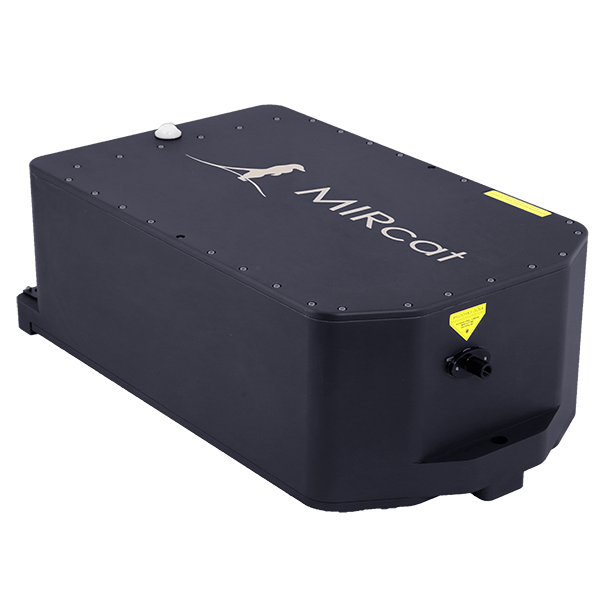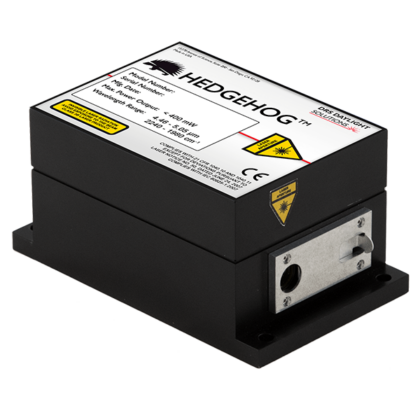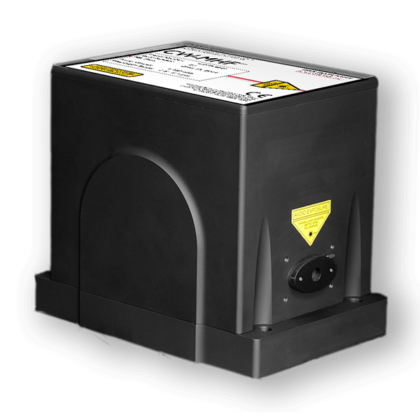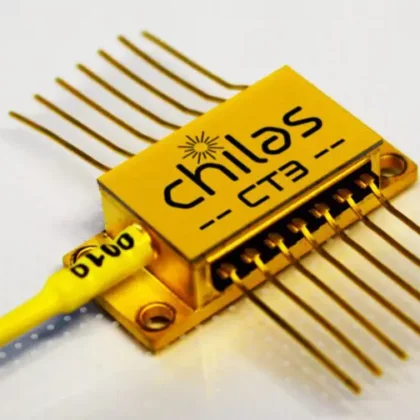For Spectroscopy at Speed, Without Compromise™.
Molecular spectroscopy applications benefit from rapid, high-SNR data acquisition. This demands fast-scan mid-IR lasers delivering high-quality light. Until now, rapid tuning has come with compromises. The MIRcat-QT changes this. For the first time, fast tuning and high-fidelity output is available from an ultra-broadly tunable, CW/pulsed mid-IR laser.
Incorporating the next generation of Daylight’s field-proven Quantum Cascade Laser (QCL) technology, MIRcat-QT delivers uncompromised performance in application-critical areas. This includes: tuning speeds to >5000 cm-1/s; tuning ranges to >900 cm-1; CW RIN as low as -145 dBc/Hz; peak power output up to 1 W [2]; average power output up to 0.5 W [2], and wavelength repeatability as low as <0.1 cm-1 [2]. With this tuning speed, MIRcat-QT can tune hundreds of cm-1 in just a few hundred ms [1],[2],[5]. In addition, MIRcat-QT provides a single TEM00 output beam, which enables high-efficiency fibre coupling.
MIRcat-QT’s flexible, modular design allows users to factory-configure their system for up to four pulsed or CW/pulsed modules, upgrade it later, or add a visible aiming beam [7]. And with Daylight‘s proprietary HFQDTM (High-Fidelity QCL Drive) circuitry, your QCL chips are protected. With a GUI and SDK command set included as standard, MIRcat-QT users can control: wavelength set-points; scans; power; triggering (and pulse width, duty cycle, and repetition rate in pulsed operation). MIRcat-QT brings new capabilities and agility to a wide range of molecular sensing applications including: process and quality control; remote sensing; imaging; and spectroscopy. Please contact us today to learn how MIRcat-QT, and our highly experienced team, can help you.
Features & Benefits:
- Wavelength availability: 3-13 µm
- Tune up to 1000 cm-1 speeds up to 5000 cm-1/s
- CW[2] or pulsed output (up to 3 MHz/30% duty)
- Ultra-quiet CW: RIN as low as -140 dBc/Hz
- Superb TEM00 beam quality and low beam pointing allows fiber coupling
- High output power for high SNR*: to > 1 W (peak) and > 0.5 W (average)
- >GUI and SDK command sets included
- Proprietary >HFQD™ circuitry protects your chips
Applications:
- Standoff detection
- Process control
- Atmospheric research
- Nanoscale imaging and spectroscopy
- TIC, VOC, and GHG chemical and biological agent detection
- Combustion diagnostics
- Biomedical diagnostics
- Imaging
- Photoacoustic spectroscopy
[2] Depends on chip(s) selected. CW requires CW-capable chip.
[3] Typical value.
[4] Beam centroid change across tuning range.
[5] Fastest inter-module switching speeds may require water cooling. Please enquire.
[6] Specification scales with wavelength. Please enquire.
[7] Requires return to factory.
[8] Some chips can support pulses up to 10 µs, PRF up to 3 MHz, and duty cycles up to 30%. Please enquire.
[9] If laser is tuned for single longitudinal mode operation.
[10] GUI compatible with Windows® 10. Please enquire for other OS




































